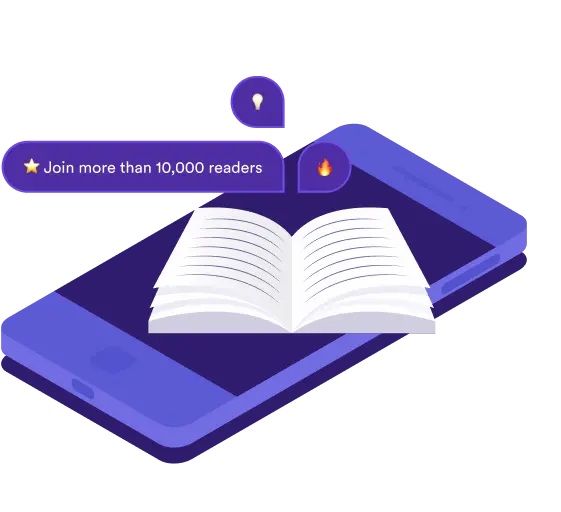Interested in SnackzLAB or SnackzAGENT? 👉🏼 This way!

Enjoying Snackz.ai?
Sign up!
or
I agree to the Privacy Policy and the Terms of Service.
Already have an account?
📩 Check your inbox!
A link to reset your password has been sent to your email address.
Reset Password
No worries! Just enter your email below, and we'll help you reset that password:
Enjoying Snackz.ai?
Sign up!
or
I agree to the Privacy Policy and the Terms of Service.
Already have an account?
📩 Check your inbox!
A link to reset your password has been sent to your email address.
Reset Password
No worries! Just enter your email below, and we'll help you reset that password:
Marty Cagan
Where would you like to order?
Please select your country to proceed with the checkout.
⚡ Free 3min Summary
INSPIRED - Summary
"INSPIRED" by Marty Cagan is a must-read for anyone involved in technology product management. This book provides a comprehensive guide on how the most successful tech companies like Amazon, Google, and Netflix create products that captivate millions. Cagan shares his expertise on building a dynamic product organization, discovering the right products, and fostering a strong product culture. The book is filled with practical advice, personal stories, and profiles of top product managers, making it an invaluable resource for startups and established companies alike.
Key Ideas
Building the Right Team
One of the core ideas in "INSPIRED" is the importance of assembling a talented and diverse team. Cagan emphasizes that a successful product organization requires a mix of skills and perspectives. He provides guidance on how to hire the right people, foster collaboration, and create an environment where innovation can thrive.
Discovering the Right Product
Cagan delves into the process of product discovery, highlighting the need for a deep understanding of customer needs and market opportunities. He outlines techniques for validating ideas, conducting user research, and iterating on product concepts. This approach ensures that companies are not just building products, but building the right products that solve real problems and deliver value to users.
Creating a Strong Product Culture
The book also explores the significance of cultivating a strong product culture within an organization. Cagan discusses the principles and practices that drive a culture of continuous improvement, customer focus, and innovation. By embedding these values into the company's DNA, organizations can consistently deliver exceptional products and stay ahead in a competitive market.
FAQ's
"INSPIRED" focuses on providing a comprehensive guide for technology product management. It covers how successful tech companies like Amazon, Google, and Netflix create captivating products, and offers practical advice on building a dynamic product organization, discovering the right products, and fostering a strong product culture.
"INSPIRED" is particularly beneficial for anyone involved in technology product management, including product managers, startup founders, and professionals in established companies. The book's actionable insights and real-world examples make it an invaluable resource for those looking to innovate and succeed in the tech industry.
Some key ideas in "INSPIRED" include the importance of building the right team with a mix of skills and perspectives, the process of discovering the right product through understanding customer needs and market opportunities, and the significance of creating a strong product culture that drives continuous improvement, customer focus, and innovation.
💡 Full 15min Summary
Der Lebenszyklus von Tech-Unternehmen umfasst das Meistern einzigartiger Herausforderungen in jeder Phase: von der Etablierung eines passenden Produkts für den Markt, über das Management schnellen Wachstums, bis hin zur Förderung kontinuierlicher Innovation trotz Bürokratie.
Zu Beginn kämpfen Startups gegen die Zeit, um einen Produkt-Markt-Fit zu finden, bevor ihnen das Geld ausgeht. Bis sie ein tragfähiges Produkt entwickelt haben, ist alles andere zweitrangig.
Im Wachstumsstadium versuchen Unternehmen, ihren anfänglichen Erfolg zu vervielfachen, indem sie sich auf verwandte Produkte und Märkte ausdehnen. Diese schnelle Expansion kann jedoch sowohl das Personal als auch die Systeme stark belasten.
Wenn Unternehmen die Unternehmensebene erreichen, erkennen sie die Notwendigkeit kontinuierlicher Innovation. Doch oft werden sie durch Bürokratie, Risikoscheu und den Drang, ihre bisherigen Erfolge zu schützen, behindert, was frische Ideen ersticken kann. Trotz dieser Herausforderungen ist es wichtig zu bedenken, dass beständige Innovation das Gegenmittel zum Niedergang ist.
Die erfolgreichsten Unternehmen sind diejenigen, die ihre Produktteams stärken und eine überzeugende Vision aufrechterhalten. Durch die richtigen Anpassungen haben Unternehmen das Potenzial, sich neu zu erfinden und neue, aufregende Produkte zu schaffen, die ihre Kunden lieben werden.
Enjoyed the sneak peak? Get the full summary!
Let's find the best book for you!
AdvertisementSection.TitleNew
AdvertisementSection.SubTitleNew

Get the books directly into your inbox!
✅ New Release
✅ Book Recommendation
✅ Book Summaries
Copyright 2023-2025. All rights reserved.